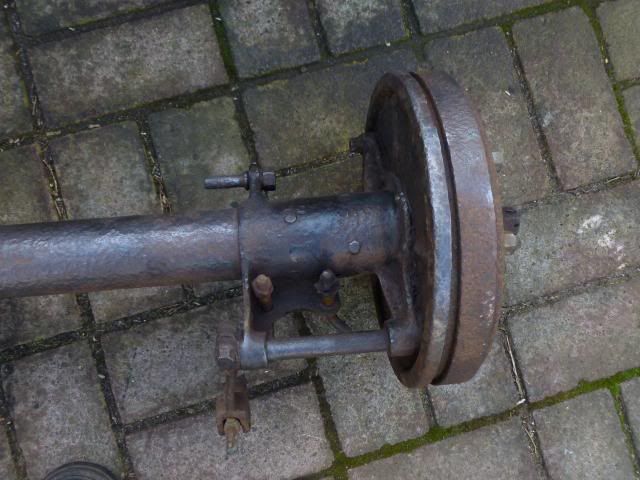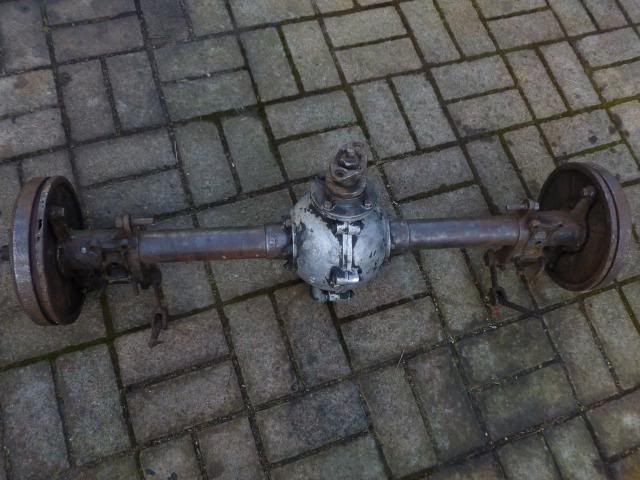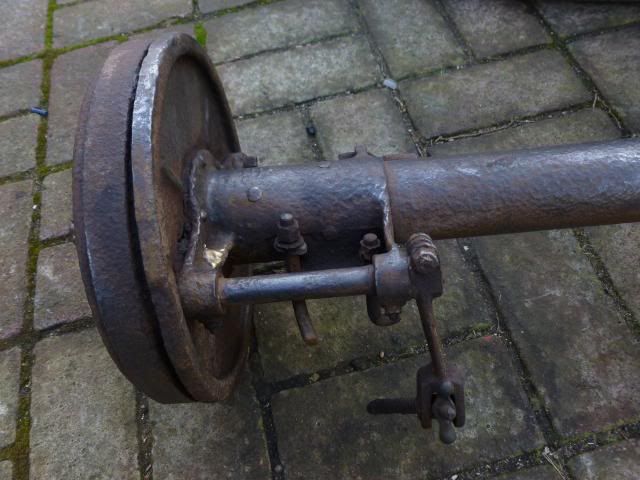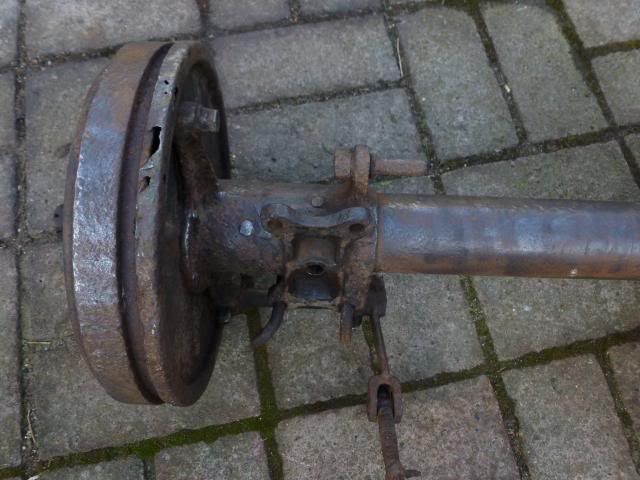Page 1 of 1
Rear axle
Posted: Tue Apr 15, 2014 9:13 pm
by porl
Re: Rear axle
Posted: Wed Apr 16, 2014 5:38 pm
by ian Howell
Porl: -
Thanks for thinking of us!
You will no doubt get better info from others soon, but it appears to be from one of the 7hp or possibly 8hp models of about 1934ish or a bit later.
It has only a two-bolt fixing for the prop shaft and there is a ball-type centring device which helps reduce stress on the fabric couplings when mated with sockets on the ends of the prop shaft.
Its a shame about the brake backplates being so badly corroded, as these are rivetted onto the axle casings. They are not a 'spare' part and either it would be necessary to replace the whole casing or else somehow fabricate replacement backplates.
It could also help - as it is a sizeable item - if you could let us know roughly where it is (for collection purposes)!
Re: Rear axle
Posted: Wed Apr 16, 2014 6:15 pm
by porl
Thanks for the reply. I'm located in North Staffordshire near Leek. Anyone welcome to come and have a look at it just contact me first. The back plates look reparable.
Re: Rear axle
Posted: Wed Apr 16, 2014 9:15 pm
by James Baxter
Austin 7? Blimey. Quite a bit different!
I always think a jowett rear axle looks like a brescia bugatti! In my dreams.
I have a couple of spare diff casings if anyone is stuck, to suit small tubes (early axle) and large tubes (later axle).
Re: Rear axle
Posted: Thu Apr 17, 2014 3:01 pm
by george garside
I would put it as pre 1934 model year i.e.probably 1931 -33. The blob in the centre of the coupling is a centering device that worked in conjuction with the rag joints. It was discontinued at the end of the 1933 model year as was not needed with the layrub coupling
george
Re: Rear axle
Posted: Fri Apr 18, 2014 12:21 pm
by ian Howell
That strikes me as curious George . . .
The coupling half on the axle has only two bolt holes, as you say presumably for the Layrub coupling. As these do not require a centering device why then are the centering 'blobs' fitted?
Possibly an earlier axle with a later coupling half?
As I say, curious . . . .
Re: Rear axle
Posted: Fri Apr 18, 2014 8:01 pm
by george garside
definitely curious Ian. On a closer look the axle or defiantely its centre casing is 1934 ( or35/6 ) as the top oil filler came in for the '34 season. This fits as the layrub also came in for '34. The anomaly is the centering peg which was discontinued when the layrub replaced the rag joint . It could well be simply that the pinion shaft was at sometime replaced by one from an earlier year and that whoever did it saw no point in removing the centering device?????????????
george
Re: Rear axle
Posted: Sun Apr 20, 2014 10:05 am
by porl
Thanks for all of the information on it. If anyone's interested in purchasing it, it's available for £75.00. I hope it's of some use to someone.
Re: Rear axle
Posted: Sun Apr 20, 2014 12:49 pm
by ian Howell
George (or anyone with CERTAIN knowledge): -
Are the 'internals' (i.e. Diff, input shaft. crownwheel. halfshafts etc.) the same as earlier/later models?
The casing and ends appear to be quite badly corroded but the internals MAY be much better if there has been some sort of oil and not too much water/condensation inside.
Porl: -
This may be of interest to me but I am a long way away and I don't travel as much as I did before I retired (then annually 50,000+!).
Re: Rear axle
Posted: Mon Apr 21, 2014 12:53 pm
by george garside
not sure whether this helps as there may be small differences in the internals according to age but to quote the Jowett Manual ( factory publication) covering ''private and commercial vehicles, all models up to 1936''
''The back axle remained, for the whole period covered by this book, fundamentally unchanged''
As to overall ratios ( crown wheel and pinion) the vintage models up to late '29 when the black prince was introduced was a very high , for a 7hp engine, 4.56 -1 giving around 17mph per 1000rpm in top gear. From late '29 to the end of 7hp production in 1936 it was changed to 5.37 -1 giving around 15mph per 1000rpm. However the Weazel had a higher ratio , possibly 4.56 -1 giving around 17mph per 1000 rpm. For the 8 and 10 with smaller wheels the ratio was 4.89 to 1 ( same 15mph per 1000rpm)and this was retained for the post war Bradford.
It is interesting and demonstrative of the pulling power of the twins that the 15mph per 1000rpm of the pre war cars ( and vans!) was virtually the same as the much more powerful Javelin and that the Vintage cars and the Weazel pulled the same 17mph per 1000 rpm as the Jupiter1
george















